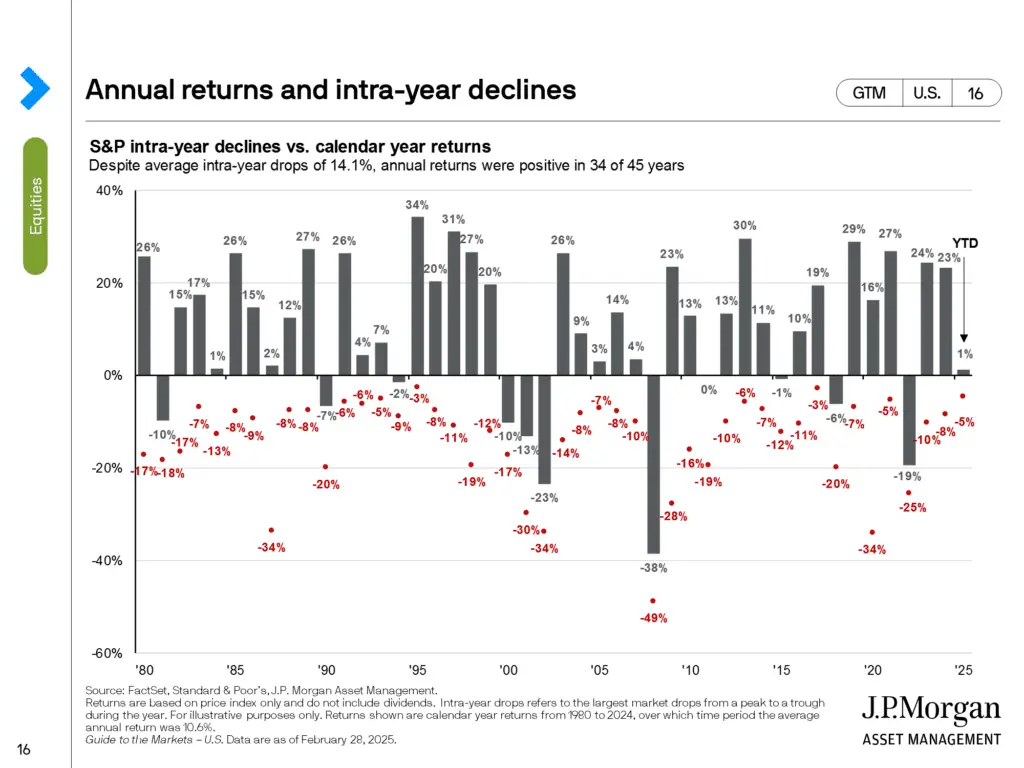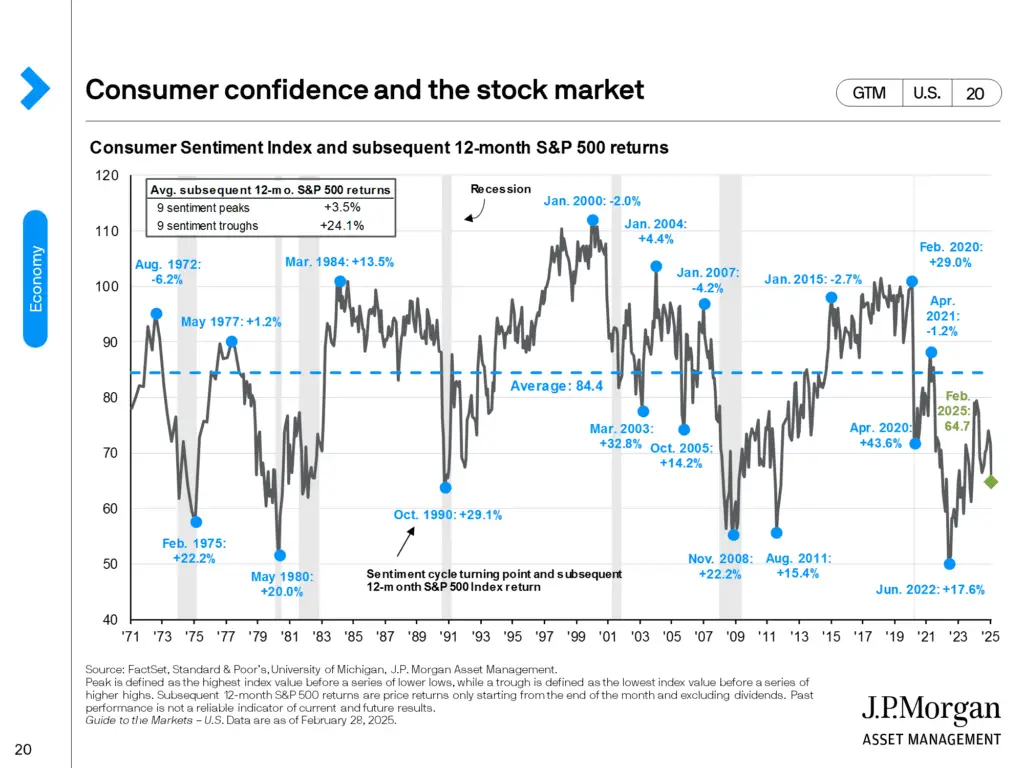A correction in the market is defined as a drop from peak to trough of 10% or more. Last Thursday, 3-13-2025, the S&P 500 and NASDAQ indexes both moved into correction territory. The Dow 30 index had not, but that’s not to say that it couldn’t or wont.
While drops (or corrections) like this may seem out of the norm, it is a normal occurrence that happens about every 2-years on average. So why does it feel so different every time?
Investors expect their investments to rise over time; that’s why they invest. Historically, investments ranging from real estate, gold, stocks, oil, commodities, and collectibles appreciate over time. Bonds generate income by paying a coupon/income on a known schedule. So when the market is rising, nobody shirks or complains as that is the expected direction of growth.
Below, is a chart of intra-year declines from 1980 through the beginning of 2025. What the chart illustrates is how much stocks (represented by the S&P 500 index) dropped ‘during the year,’ and where they ultimately finished. As an example, 2023 had a peak to trough drop of 10% during the year, but the S&P 500 index finished 24% up.

And the underlying theme is that if an investor bailed out every time their portfolio dropped by 10, 15, or 20%…succumbing to fear of never recovering, history presents a compelling reason to stick it out. We also know that past results are not indicative of future returns. But they are really all we have to learn from year after year, decade after decade.
The second chart is the consumer confidence (or sentiment) index. Another index not shown here is the volatility index, or VIX. That one is also known as the ‘fear’ index. The consumer sentiment index can be used to reflect back on times when investors felt negative about investing, and how the S&P 500 index performed over the following 12-month period.

Over the 9-sentiment troughs (note: we could be approaching one now), the S&P 500 index grew 24.1% after reaching the lowest trench of sentiment. This is undoubtedly one of the most mentally challenging times to invest. Mentally, it would feel like running into a house on fire…something antithetical to most humans with a pulse.
But those who have the stomach to invest systematically or even buying when stocks are beaten up have historically fared better than the average investor reacting to their fears of the market.
If you would like to discuss your current or planned investment strategy, please give our office a call. Creating a plan that suits your goals and lifestyle is something we can work on.
